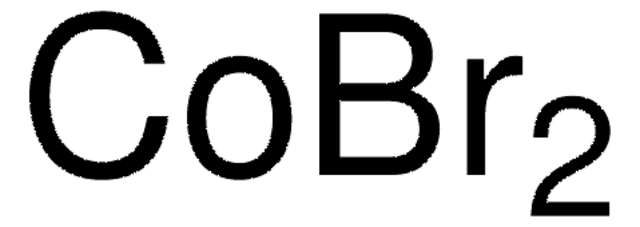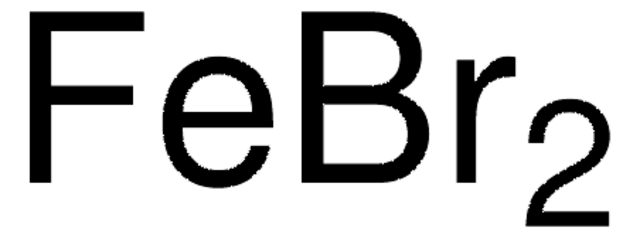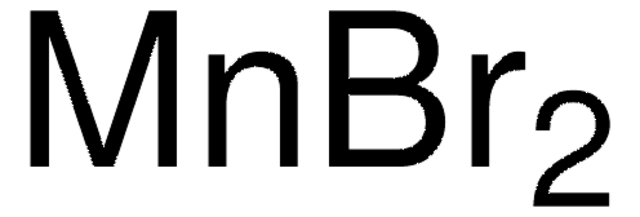334022
Cobalt(II)-bromid
99%
Synonym(e):
Cobaltous bromide, Dibromocobalt
About This Item
Empfohlene Produkte
Assay
99%
Form
powder
mp (Schmelzpunkt)
678 °C (lit.)
Löslichkeit
acetone: soluble(lit.)
ethanol: soluble(lit.)
methanol: soluble(lit.)
Dichte
4.909 g/mL at 25 °C (lit.)
Anwendung(en)
battery manufacturing
SMILES String
Br[Co]Br
InChI
1S/2BrH.Co/h2*1H;/q;;+2/p-2
InChIKey
BZRRQSJJPUGBAA-UHFFFAOYSA-L
Suchen Sie nach ähnlichen Produkten? Aufrufen Leitfaden zum Produktvergleich
Anwendung
- Synthesis, crystal structure and thermal properties of dibromidobis (2-methylpyridine N-oxide-κO) cobalt (II): This study provides insights into the crystal structure and thermal properties of a cobalt(II) bromide complex, highlighting its potential applications in materials science (Näther & Jess, 2024).
- Coordination complexes of isoquinoline with cobalt and nickel halides: The study describes the formation of coordination complexes using cobalt(II) bromide with isoquinoline, which could be used for further exploration in coordination chemistry (Bellerive et al., 2024).
Signalwort
Danger
Gefahreneinstufungen
Acute Tox. 4 Oral - Aquatic Acute 1 - Aquatic Chronic 1 - Carc. 1B - Muta. 2 - Resp. Sens. 1 - Skin Sens. 1
Lagerklassenschlüssel
6.1C - Combustible acute toxic Cat.3 / toxic compounds or compounds which causing chronic effects
WGK
WGK 3
Flammpunkt (°F)
Not applicable
Flammpunkt (°C)
Not applicable
Hier finden Sie alle aktuellen Versionen:
Besitzen Sie dieses Produkt bereits?
In der Dokumentenbibliothek finden Sie die Dokumentation zu den Produkten, die Sie kürzlich erworben haben.
Kunden haben sich ebenfalls angesehen
Artikel
Lithium-Ion Battery Performance: Dependence on Material Synthesis and Post‑Treatment Methods
We presents an article about a micro review of reversible addition/fragmentation chain transfer (RAFT) polymerization. RAFT (Reversible Addition/Fragmentation Chain Transfer) polymerization is a reversible deactivation radical polymerization (RDRP) and one of the more versatile methods for providing living characteristics to radical polymerization.
Tools for Performing ATRP
Applying ARGET ATRP to the Growth of Polymer Brush Thin Films by Surface-initiated Polymerization
Protokolle
We presents an article featuring procedures that describe polymerization of methyl methacrylate and vinyl acetate homopolymers and a block copolymer as performed by researchers at CSIRO.
Sigma-Aldrich presents an article about RAFT, or Reversible Addition/Fragmentation Chain Transfer, which is a form of living radical polymerization.
Sigma-Aldrich presents an article about the typical procedures for polymerizing via ATRP, which demonstrates that in the following two procedures describe two ATRP polymerization reactions as performed by Prof. Dave Hadddleton′s research group at the University of Warwick.
Unser Team von Wissenschaftlern verfügt über Erfahrung in allen Forschungsbereichen einschließlich Life Science, Materialwissenschaften, chemischer Synthese, Chromatographie, Analytik und vielen mehr..
Setzen Sie sich mit dem technischen Dienst in Verbindung.














